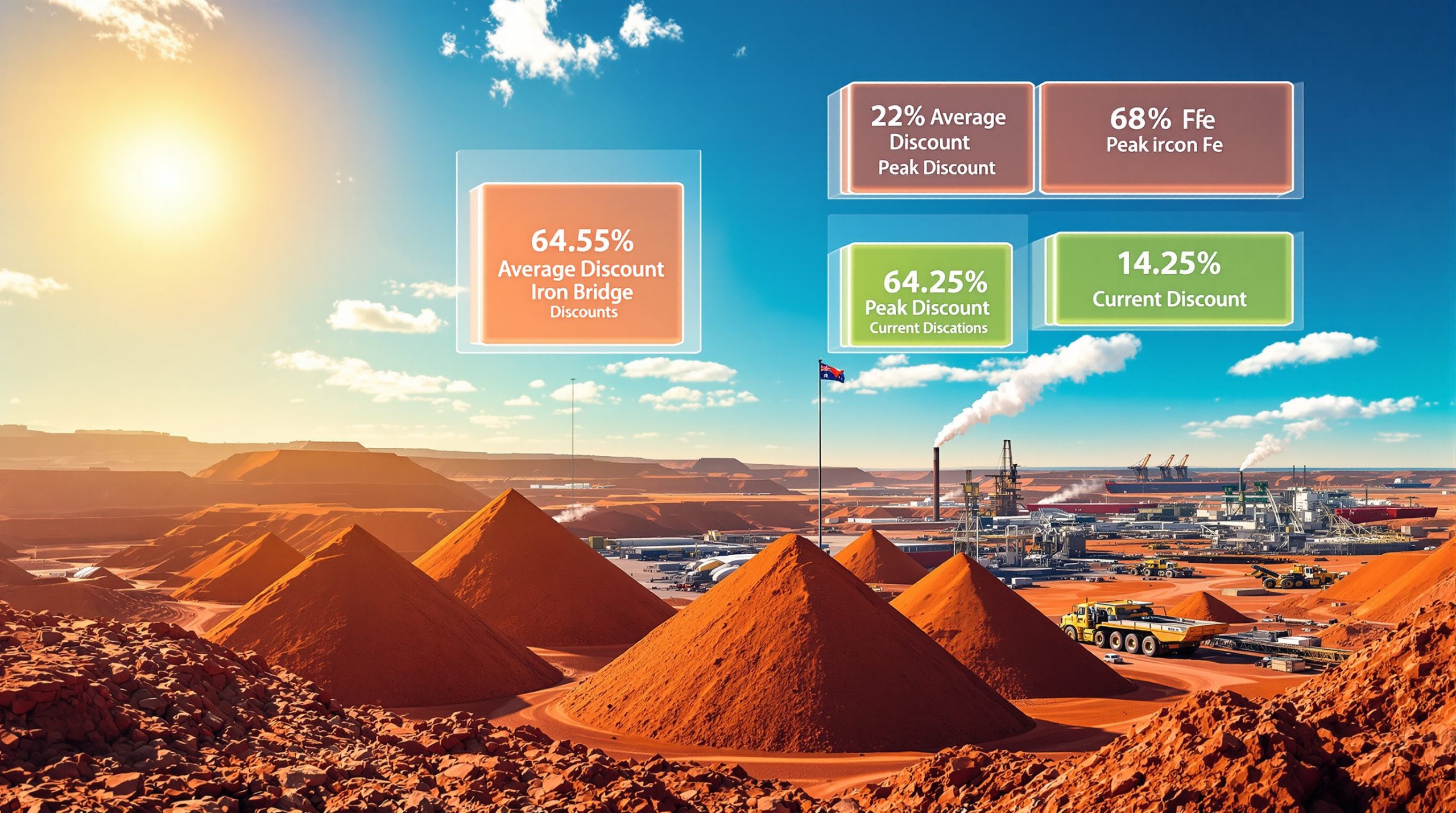How Has the Decline in Raw Material Prices Impacted the Prebaked Anode Market?
The prebaked anode market is experiencing a significant transformation as raw material costs continue their downward trajectory. This shift marks a critical turning point for industry participants who have endured sustained cost pressures throughout early 2025.
According to the latest industry data, comprehensive production costs for prebaked anodes have fallen to 4,985 yuan/mt as of May 9, 2025—representing a substantial 7.08% decrease from April figures. This cost reduction directly correlates with declining prices of key raw materials, particularly petroleum coke and coal tar pitch.
The impact of these price reductions extends throughout the value chain, with both domestic and export markets adjusting downward. While producers continue to operate at theoretical losses, the margin has narrowed significantly by approximately 103 yuan/mt, signaling potential recovery on the horizon.
"The prebaked anode market is experiencing a classic raw material-driven price correction," notes industry analysts. "After sustained cost inflation through early 2025, we're witnessing the pendulum swing back toward equilibrium."
The effects of this decline have been multifaceted, influencing everything from procurement strategies to production planning. Many downstream aluminum smelters have adopted cautious purchasing approaches, preferring smaller orders while anticipating further price decreases.
What Are the Current Price Trends in the Prebaked Anode Market?
Recent Price Adjustments and Market Movement
The prebaked anode market has experienced a significant shift from rising to falling prices between April and May 2025. This reversal reflects broader changes in raw material costs and market sentiment.
Key indicators of this downward trend include:
- A major Shandong aluminum enterprise reduced its May benchmark tender price by 266 yuan/mt, representing a 5.11% month-on-month decrease
- A leading domestic prebaked anode sales company lowered prices by 466 yuan/mt month-on-month
- Export order prices adjusted downward by approximately $30-50/mt amid global competition
- Current east China anode prices now range between 4,939-8,294 yuan/mt
The price decline represents a meaningful correction after months of escalating costs, though regional variations persist. Notably, prebaked anodes produced in Yunnan maintain a price premium of approximately 12% compared to Shandong-manufactured products, reflecting ongoing capacity relocations and regional cost structures.
Comprehensive Cost Analysis
The cost structure for prebaked anodes has improved dramatically over recent weeks:
- Comprehensive production costs fell to 4,985 yuan/mt as of May 9, 2025
- This represents a substantial 7.08% decrease from April 7, 2025
- Despite continued operational losses, the theoretical loss margin has narrowed by approximately 103 yuan/mt
- Price-to-cost ratios have improved from 0.93 to 0.97, approaching breakeven levels
While manufacturers continue operating below profitable thresholds, the narrowing gap between costs and sales prices indicates early signs of market recovery. The improved cost structure stems primarily from declining raw material prices, which constitute 70-80% of total production expenses.
"Cost-side pressure reduction has become the primary support for market conditions," according to SMM analysis, "though demand inertia continues to limit upward price movement."
Why Are Raw Material Prices Declining?
Petroleum Coke Market Dynamics
Petroleum coke, which accounts for approximately 60% of prebaked anode raw material costs, has experienced notable price declines across all major production regions:
- Low-sulfur petroleum coke in northeast China dropped 7.78% to approximately 3,958 yuan/mt
- Local refinery petroleum coke prices fell to 2,433 yuan/mt, a 2.37% reduction
- High-sulfur imported petroleum coke prices declined by 4.5% in eastern port inventories
This downward trend stems from a complex interplay of market forces. The industry is currently experiencing what analysts describe as a "tug-of-war" between:
- Supply-side support: Increased refinery maintenance activities have reached 18% utilization rates (up from 12% in April), constraining petroleum coke production
- Demand-side weakness: Diminished purchasing enthusiasm from downstream anode producers, with many adopting wait-and-see procurement strategies
Another factor influencing petroleum coke availability is the shifting demand from multiple industries. While aluminum production (63%) remains the primary consumer, competition from steel (22%) and titanium (8%) sectors has moderated as these industries face their own demand challenges.
Coal Tar Pitch Price Movements
Coal tar pitch, the second critical component in prebaked anode production, has experienced even more dramatic price reductions:
- Average coal tar pitch prices fell to 3,787 yuan/mt as of May 9, 2025
- This represents a substantial 17.14% decrease from April 7, 2025
- Spot market prices in major production hubs like Shandong and Hebei declined even more sharply
Several factors are driving this accelerated decline in coal tar pitch prices:
- Reduced steel production has decreased demand for metallurgical coke, limiting coal tar availability
- Environmental regulations have prompted some producers to upgrade facilities, temporarily reducing output
- Some aluminum smelters have experimented with synthetic binder alternatives, reducing pitch demand by approximately 5% quarter-on-quarter
The combined effect of these raw material price reductions has significantly loosened cost pressures on prebaked anode producers, though market participants remain cautious about whether these trends will continue through the second half of 2025.
How Is the Supply-Demand Balance Evolving?
Current Production Capacity and Operational Status
The prebaked anode production landscape remains relatively stable despite significant raw material price fluctuations and regional capacity adjustments:
- Industry-wide operating rate reached 75.45% in April 2025
- This represents a modest 1.28 percentage point month-on-month decrease
- Production volumes totaled approximately 1.85 million metric tons in April
- Regional capacity utilization varies significantly, with Yunnan facilities operating at 82.3% versus 71.8% in Shandong
Several key factors have influenced production levels:
- Seasonal maintenance: Several facilities conducted spring maintenance programs, temporarily reducing output
- Regional transitions: Ongoing aluminum capacity transfer from Shandong to southwestern provinces has disrupted traditional supply chains
- Calendar effects: April had one fewer production day compared to March, contributing to month-on-month volume declines
- Margin considerations: Some producers have strategically reduced utilization in response to continued negative margins
Despite these challenges, overall anode production capacity has remained stable at approximately 8.2 million metric tons annually, with only minor expansions completed in Q1 2025.
Domestic Aluminum Industry Growth
China's aluminum sector continues to expand while undergoing structural adjustments that directly impact anode demand:
- Operating aluminum capacity reached 43.91 million mt by end of April 2025
- Industry operating rate increased to 96.1% (up 0.3 percentage points month-on-month)
- Year-on-year operating rate improvement of 1.8 percentage points
- Primary aluminum production increased by 3.2% year-on-year in Q1 2025
This growth has been driven by several developments:
- Full production resumption in Sichuan and Chongqing regions following earlier hydropower limitations
- Completion of capacity upgrade projects in Qinghai, adding 50,000 mt/year of modern smelting capacity
- Ongoing capacity relocation from Shandong to Yunnan (200,000 mt/year in phase one)
The strong aluminum industry operating rate (96.1%) creates substantial and consistent demand for prebaked anodes, with approximately 400-500kg of anodes required per ton of aluminum produced. This translates to an estimated annual demand of 7.0-7.5 million metric tons.
Export Market Performance
International demand has provided significant support to the prebaked anode sector amid domestic market challenges:
- Q1 2025 prebaked anode exports reached 582,600 mt
- This represents a substantial 21.29% year-on-year increase
- Export destinations have diversified, with significant growth in shipments to Southeast Asia, India, and the Middle East
- Chinese anodes maintain a competitive advantage with FOB prices approximately $120/mt below Indian domestic prices
Export growth has been driven by:
- New global aluminum capacity additions, particularly in Indonesia, Malaysia, and India
- Recovery of existing operations in traditional markets following earlier curtailments
- Competitive pricing from Chinese producers leveraging scale advantages and raw material access
- Quality improvements enabling Chinese anodes to meet stringent specifications for high-amperage smelters
The robust export performance has helped offset domestic market challenges, though recent price adjustments of $30-50/mt downward suggest intensifying global competition.
What Is the Market Outlook for Prebaked Anodes?
Short-Term Price Forecast
Several factors suggest continued price weakness in the near term, though the rate of decline may moderate:
- Petroleum coke prices are expected to maintain their downward trajectory in May 2025, with SMM forecasting additional 3-5% decreases
- Coal tar pitch prices may stabilize at current levels as steel production recovers seasonally
- Sustained cost-side pressure reduction will likely keep anode prices subdued through Q2 2025
- Buyer-seller dynamics remain unbalanced with strong wait-and-see sentiment limiting transaction volumes
The cautious outlook is reinforced by inventory levels, which have increased to 1.8 months of supply (versus 1.5 months considered optimal). Many downstream consumers have delayed major procurement decisions while anticipating further price reductions.
Disclaimer: Market forecasts involve inherent uncertainties and may be influenced by unforeseen factors including regulatory changes, extreme weather events, or global economic shifts.
Medium-Term Industry Prospects
Despite current challenges, the prebaked anode market shows fundamental resilience that should support gradual recovery:
- Dual support from domestic and international demand expected throughout 2025, with aluminum capacity growth forecasted at 4.2% annually
- Capacity adjustments and relocations likely to optimize production efficiency and environmental performance
- Second batch of capacity replacement from Shandong to Yunnan (200,000 mt/year) anticipated in Q3 2025
- Maintenance activities at aluminum facilities remain limited, supporting stable anode demand through year-end
Several structural factors will influence market dynamics through 2025-2026:
- Energy transition: Ongoing shifts toward hydropower and renewable energy in southwestern China will continue attracting aluminum capacity
- Environmental regulations: Stricter emissions standards may accelerate facility upgrades or closures, particularly for older anode plants
- Export competitiveness: Potential carbon border adjustment mechanisms could impact export viability to certain markets
- Raw material volatility: Refinery utilization and coking coal availability will remain key variables affecting input costs
Industry participants should prepare for a gradual market rebalancing rather than dramatic price movements in either direction.
What Are the Key Market Indicators to Monitor?
Critical Supply-Side Factors
Market participants should closely track several key supply-side indicators to anticipate market movements:
-
Refinery maintenance schedules and their impact on petroleum coke availability
- Current maintenance rates (18%) are above seasonal norms
- Summer scheduling typically sees reduced maintenance activity
- Sinopec and PetroChina maintenance calendars provide forward visibility
-
Coal tar pitch production levels and pricing trends
- Correlation with steel industry operating rates (currently 87.2%)
- Seasonal patterns typically show Q3 production increases
- Inventory-to-consumption ratios currently at 32 days (versus 45-day historical average)
-
Regional capacity shifts and their effect on supply distribution
- Shandong-to-Yunnan transitions create temporary logistics challenges
- Transportation costs add approximately 380-420 yuan/mt to relocated production
- Infrastructure development timelines in southwestern regions
-
Operating rates at major prebaked anode production facilities
- Current 75.45% utilization provides limited upside flexibility
- Maintenance schedules concentrated in April-May and October-November
- Cost curve analysis suggests 5-10% of capacity operates below break-even
Tracking these supply indicators provides critical insights into potential market inflection points.
Essential Demand-Side Elements
Equally important are demand-side indicators that signal shifts in anode consumption patterns:
-
Aluminum industry capacity expansion plans and operational status
- Current 96.1% operating rate leaves minimal headroom for increased utilization
- Announced capacity additions of 1.8 million mt/year for remainder of 2025
- Energy availability in key hydro-powered regions during dry season (October-March)
-
International export order volumes and pricing
- Q1 2025 export growth of 21.29% may moderate as global competition intensifies
- Price sensitivity of key export markets to $30-50/mt fluctuations
- Shipping container availability and freight rates to major destinations
-
Regional aluminum capacity relocations and their timing
- Phase two Shandong-to-Yunnan transfers (200,000 mt/year) scheduled for Q3 2025
- Qinghai capacity expansion commissioning timelines
- Environmental approval processes for new projects
-
Seasonal demand fluctuations and their impact on purchasing patterns
- Historically stronger procurement in August-September for winter inventory building
- Reduced buying activity during Chinese New Year period (January-February)
- Contract negotiation timing for annual supply agreements (typically November-December)
By monitoring these key indicators, market participants can better anticipate shifts in the supply-demand balance affecting prebaked anode pricing.
FAQ: Understanding the Prebaked Anode Market
How do raw material prices affect prebaked anode production costs?
Raw materials constitute approximately 70-80% of prebaked anode production costs, with petroleum coke and coal tar pitch being the primary components. The recent 7.08% reduction in comprehensive costs directly correlates with the 7.78% decline in petroleum coke and 17.14% drop in coal tar pitch prices.
This high cost sensitivity creates a multiplier effect where relatively small raw material price changes significantly impact overall profitability. Industry cost models show that for every 1% change in petroleum coke prices, anode production costs typically shift by approximately 0.6%.
The cost structure breakdown for prebaked anodes includes:
- Petroleum coke: 55-65% of total costs
- Coal tar pitch: 15-20% of total costs
- Energy consumption: 8-12% of total costs
- Labor and maintenance: 5-8% of total costs
- Other inputs: 2-5% of total costs
This cost structure explains why the recent decline in raw material prices and impact on prebaked anode market have narrowed production losses despite continued challenging market conditions.
What factors are driving the current market imbalance?
The market is experiencing a combination of interrelated factors creating temporary imbalance:
-
Declining raw material costs: The 7.78% reduction in petroleum coke and 17.14% decrease in coal tar pitch prices have significantly altered producer cost structures
-
Relatively stable production capacity: Industry-wide operating rates remain near 75.45%, indicating limited supply-side adjustment despite margin pressures
-
Regional demand shifts: Aluminum capacity relocations from Shandong to southwestern provinces have disrupted traditional supply relationships and created logistical challenges
-
Strong export performance: 21.29% year-on-year growth in exports has partially offset domestic weakness but introduced greater exposure to international price competition
-
Cautious purchasing behavior: Downstream consumers anticipating further price declines have minimized inventory positions and adopted just-in-time procurement strategies
This complex interplay of factors suggests the market imbalance may persist until clearer pricing signals emerge in the second half of 2025.
How might the prebaked anode market evolve in the second half of 2025?
The prebaked anode market is likely to see gradual improvement as several factors align:
- Aluminum capacity relocations: Completion of transition phases will stabilize regional demand patterns and optimize logistics
- Export demand: Continued international growth provides diversification against domestic market volatility
- Raw material price stabilization: Petroleum coke and coal tar pitch markets should find equilibrium as refinery maintenance normalizes
- Industry operating rates: Potential optimization toward 80-85% utilization as loss-making capacity temporarily curtails production
Several potential market scenarios could emerge:
Base Case: Gradual price stabilization in Q3 with modest recovery in Q4 as iron ore price trends and other raw material prices find equilibrium and demand patterns normalize.
Bullish Case: Accelerated recovery if aluminum demand exceeds expectations, particularly if infrastructure stimulus measures are implemented or export markets outperform.
Bearish Case: Prolonged weakness if petroleum coke and coal tar pitch prices
Ready to Get Immediate Alerts on Significant Mineral Discoveries?
Discovery Alert's proprietary Discovery IQ model instantly transforms complex mineral data into actionable investment insights, helping you stay ahead of the market with real-time notifications of significant ASX discoveries. Visit our discoveries page today to see how major mineral discoveries have historically generated substantial returns for early investors.




